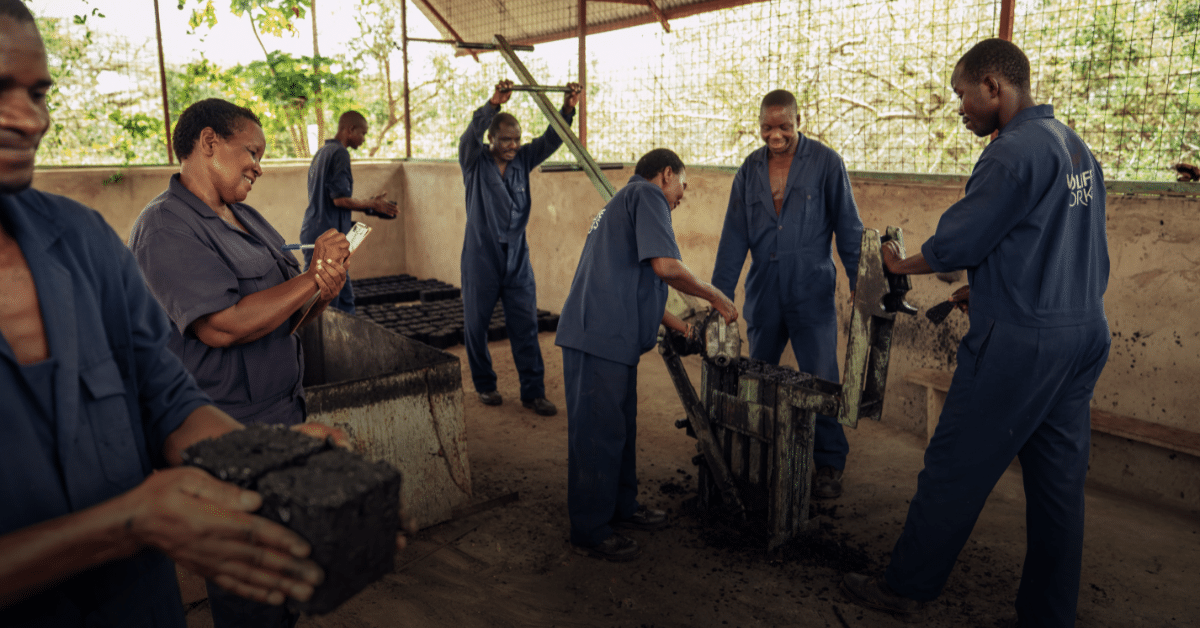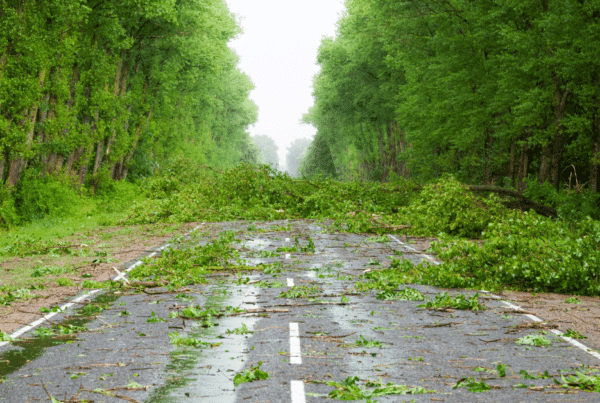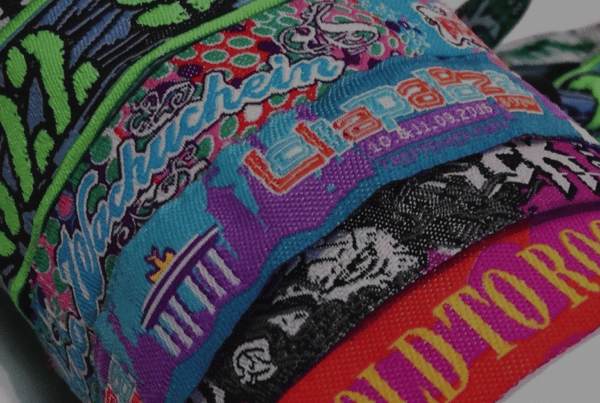Our planet is in crisis. From rising sea levels to intensifying weather patterns, mounting evidence shows that the Earth’s climate is undergoing significant and undeniable changes due to human activity. As a result, companies and individuals have begun to look for ways to reduce their environmental impact through carbon offset projects. And if you’re reading this, you’re probably in the same boat.
Are you overwhelmed by the dizzying array of carbon-offsetting projects out there? It can be tough to know which ones are truly top-notch and effective, and let’s face it, not all of us have time to sift through endless reports and verification documents. But fear not! In this article, we’ll explore what a carbon offset project is, the various types of projects available, and how you can choose the right one to support – so that you can be sure that your investment is making a real difference. Buckle up, and let’s dive into how to choose the right carbon offset project to help save our planet!
What is a carbon offset project?
Carbon offset projects aim to mitigate the impacts of greenhouse gas (GHG) emissions by reducing or sequestering carbon dioxide. In a nutshell, they take CO2 out of the atmosphere and store it. Through carbon markets, such projects can sell or trade carbon credits, which are certificates representing the verified quantities of greenhouse gasses that have been kept or removed from the atmosphere. A single carbon credit represents one metric tonne of carbon dioxide, equivalent to a one-way plane trip from Los Angeles to Paris.
Supporting carbon offset projects provides a means of compensating for greenhouse gas emissions. There is a range of projects, such as solar or forest conservation (we’ll cover the types of projects in more detail later on). By investing in these projects, individuals and companies can offset their own carbon footprint and join the fight against climate change.
What types of carbon projects can you choose from?
Knowing your emissions reductions from your carbon removals is key when choosing your offset project. Think of it like this, would you rather prevent a mess from happening in the first place, or clean up a mess that’s already been made? Let us explain.
Here are the two main kinds of offsetting projects:
Avoidance projects: Projects that prevent greenhouse gas emissions from occurring. They include protecting carbon sinks such as forests, switching to cleaner fuels, improving household devices, and implementing better water management practices. (Avoidance is what Stand For Trees’ forest conservation projects are all about)!
Removal projects: Projects that remove emissions already present in the atmosphere. They include direct air capture, afforestation, reforestation, and regenerative agriculture.
While both types of projects are vital for addressing climate change, most carbon offset projects available today are avoidance projects. This is largely because carbon removal technologies—such as injecting CO2 into basaltic rock to store it permanently—are at an early stage of their development and require substantial infrastructural investment to become feasible.
Nature has, of course, made its own supreme carbon removal machines in the form of trees and soils, making solutions like tree planting a viable option. However, it’s worth noting that carbon avoidance projects can have an immediate impact. In contrast, carbon removal projects take much longer to achieve results. We cannot focus solely on removals and neglect urgent measures of decreasing forest emissions, which could pose a significant threat to the progress of the climate change trajectory.
At Stand For Trees, we believe that “You should patch the hole before you bail out the boat,” which is why we offer offsets for avoided emissions.
All in all, when choosing an offset project, it’s essential to consider both carbon avoidance and carbon removals. But it’s equally important to look into the type of project and the source of emissions they are designed to mitigate.
Offset projects can be divided into several general categories:
– Forestry and Land Use: projects that protect and restore existing forest areas threatened by deforestation. These projects are based all over the world, from growing forests in the United States to conserving the Amazon Rainforest in Brazil.
– Renewable Energy: renewable power infrastructures that harness the power of the sun, wind, and water to contribute to the decarbonization of the local energy grid. Solar panels on homes and wind turbines on farms are examples of such projects.
– Energy Efficiency: energy-saving measures that reduce carbon emissions and replace fossil fuels with sustainable energy sources. For instance, replacing inefficient cookstoves that emit pollutants to efficient cookstoves that burn less fuel and produce less smoke.
– Agriculture: agricultural practices that store carbon in soils while restoring biodiversity and developing new sources of income for smallholders.
– Chemical / Industrial: projects that reduce emissions from chemical and industrial processes, which could come in the form of improving energy efficiency in factories.
– Transport: transportation-based carbon offset program focused on reducing emissions from transportation activities, such as cars, buses, trains, and airplanes.
– Household & Community: promotes energy-efficient household activities such as heating, cooling, lighting, and cooking.
– Waste Management: yields sources of energy generation from what could otherwise pollute local environments, such as landfilling, incineration, and wastewater treatment and also promotes recycling, recovery & reuse of plastics, metal, and paper.
What kind of carbon credits can you purchase within these general categories? Well, there is certainly not a shortage of choices. In 2021, 170 different credit types were transacted.[1] Here’s a quick tour through a few projects companies and individuals can fund.
Blue Carbon Carbon Credits
You can offset your carbon footprint with a splash of blue! A blue carbon credit is a type of carbon offset credit that is generated through the conservation, restoration, or sustainable management of coastal and marine ecosystems, such as mangroves, salt marshes, and sea grasses. These ecosystems absorb and store significant amounts of carbon dioxide from the atmosphere, making them vital for mitigating climate change. Blue carbon credits are becoming increasingly popular for individuals and organizations to offset their carbon footprint while supporting the conservation of marine ecosystems.
Mikoko Pamoja is a community-led mangrove conservation and restoration project based in southern Kenya, and the world’s first blue carbon project. Around 5600 mangrove seedlings have been planted to date, helping to stabilize the shoreline and reduce coastal erosion.
Clean Cookstove Carbon Credits
Clean cookstove carbon credits are a type of carbon offset credit generated by the distribution and use of clean and efficient cookstoves in developing countries. These stoves use cleaner fuels and more efficient combustion technologies, significantly reducing greenhouse gas emissions and improving indoor air quality. This makes them an effective way to combat climate change while improving the health and livelihoods of people in low-income communities.
The EcoZoom project in Ghana provides households with clean cookstoves that use less fuel and emit less smoke compared to traditional stoves. The project reduces deforestation, lowers carbon emissions, and improves the health and well-being of local communities.
REDD+ Carbon Credits
What type of project could both enhance coastlines and provide efficient cookstoves wrapped up in one project? Well, REDD+ could because it comes with all kinds of co-benefits.
REDD+ credits are a type of carbon offset credit resulting from forest conservation and restoration projects. The term “REDD” is an acronym for “Reducing Emissions from Deforestation and Forest Degradation,” and the ‘+’ represents all the other things we get from forests. Like biodiversity, livelihoods, wildlife habitat, and much more.
REDD+ is a vital model because deforestation emits 3 billion tonnes of carbon yearly, more than all cars and trucks combined. REDD+ prevents the destruction of forests and their ecosystems by incentivizing communities to protect forests and adopt sustainable land-use practices, which in turn helps address climate change while preserving biodiversity and supporting local communities.
Stand For Trees collaborates exclusively with REDD+ projects that meet stringent standards for quality and sustainability, ensuring verified baselines and genuine emissions reductions. Our mission is to bring the power of these projects to individuals and organizations to offset their carbon footprint and contribute to global climate action.
Here’s an example of one of the many incredible REDD+ carbon offset projects on our platform:
The Southern Cardamom project, located in Cambodia’s vast Cardamom Mountains, aims to protect the region’s biodiverse tropical forests and uplift local inhabitants and wildlife. By working with local communities and supporting sustainable land use and forest management practices, the project protects nearly 500,000 hectares and prevents 110 million tonnes of carbon emissions. In addition to its climate benefits, the project provides economic and social benefits to local communities, including ecotourism and ranger jobs. (Not to mention, rangers here confiscate on average more than 1,500 chainsaws a year. That’s around 5 a day – and each one can clear cut up to one hectare a day)!
That all sounds great, any drawbacks?
While carbon offset projects, such as the ones mentioned above, are an effective way to mitigate the impact of emissions, some critics are concerned about the potential for greenwashing and the effectiveness of offset projects.
You’ve probably heard “greenwashing” increasingly springing up in headlines. One of the main concerns about the possibility of greenwashing concerning carbon offsetting is that companies may spend more money on carbon offsets to appear more environmentally friendly than on actually minimizing its environmental impact in-house. For example, what if a company claims to be an environmentally responsible company through carbon offsets when, in reality, they continue to pump a massive amount of harmful fossil fuels into the atmosphere without taking steps to reduce that? Instead, the best way to be sustainable is to cut emissions in the first place and use carbon offsetting to intervene on “residual” emissions – which cannot be avoided.
Carbon offsets are not a “get out of jail free card” to avoid lowering a company’s or your own emissions.
Another concern is that offset projects may not always deliver the expected environmental benefits. That’s why it’s essential to check into the standards by which an offset program operates. This will help you determine that projects are real and have a measurable impact that wouldn’t be possible without the offsets.
In summary, we can work towards a more sustainable future by taking meaningful steps to reduce our environmental impact and supporting verified impactful carbon offset projects.
What key criteria should you consider for selecting a high-quality offset project?
Here are the factors you should check:
The project is certified.
Certified for success: Look for projects certified by international or national standards to issue carbon credits. These standards ensure the projects meet specific criteria and follow established methodologies for calculating emissions reductions or absorption. The most common standards include The Gold Standard, The Verified Carbon Standard (VCS) Program, Climate Action Reserve (CAR), and American Carbon Registry (ASR). So, if you don’t see any sort of certification, that’s a major red flag for the quality of the project.
Emission reductions are measurable.
The proof is in the numbers: When selecting offset projects, ensuring that all emission removals are real and quantifiable is crucial. Projects must apply an approved methodology, so you can be confident that the carbon credits you’re purchasing represent a true reduction in emissions. Without accurate measurement, you risk investing in projects that don’t make a significant impact on the environment.
The offset project adds value (is additional).
Taking it Up a Notch: Essentially, “additionality” means that a project must go above and beyond what would have happened anyway under a “business-as-usual” scenario. In other words, it must demonstrate that the greenhouse gas emission reductions or removals achieved would only have occurred with intervention (revenue from the sale of verified carbon units). Overall, additionality is crucial in ensuring that projects make a real impact.
Emission removal and reduction is independently verified.
Holding projects accountable: We all need a little accountability in our lives – including carbon offset projects. That’s why high-quality carbon offset projects undergo independent third-party verification. This process involves a comprehensive review of the project’s design, implementation, and monitoring to confirm that it meets the necessary standards and requirements. Independent verification is critical to ensuring that the carbon credits generated by the project represent a real reduction in emissions and can be trusted.
Every carbon credit is unique and transparently listed.
One-of-a-kind: Carbon credits from carbon projects are like snowflakes – no two are alike. But that’s a good thing. Each credit gets its own serial number and public listing, ensuring that it’s the real deal. This added transparency helps buyers trust that they’re supporting genuine emissions reductions while preventing fraud and keeping the carbon offset market in tip-top shape.
Carbon credits are permanent.
Standing the test of time: For it to be a high-quality carbon offset project, carbon credits must represent permanent emission removals. This means that once credits are issued, the emission reductions they represent cannot be reversed or lost due to unforeseen events such as forest fires or disease. It’s like a tattoo – you want it to be permanent and not fade away after a few washes.
Overall, ensuring that the projects meet certain criteria is essential to guarantee their quality and effectiveness. These key criteria include certification, measurability, additionality, permanence, independent verification, and transparency.
How can you align your carbon offset project choice with your goals?
Now you know what criteria make up a high-quality project, but aligning your carbon offset choice with your goals requires careful consideration and research. By following a few steps, you can decide which carbon offset project to invest in, ensuring that your investment aligns with your goals and values and contributes to a more sustainable future.
-
Measure your carbon footprint.
Measuring your carbon footprint is an important first step towards reducing your environmental impact, whether you are an individual or a company. By taking a comprehensive approach, you can identify the factors contributing to your overall emissions and find ways to reduce them. Emission measurements can be done using various tools, such as online calculators; Stand For Trees has a plethora of free carbon calculators for lifestyle, business, travel, and more. Armed with a quantified carbon footprint of unavoidable emissions, you can make informed choices on carbon offsetting options that align with your values and goals.
-
Identify your goals.
As a second step, seeing if the project matches your environmental and social goals is essential. You’ll want to ask, what kind of additional positive outcomes are there within the project beyond carbon reduction? These co-benefits can include but are not limited to job creation, biodiversity conservation, and improved community health. For instance, a project supporting sustainable farming practices can help reduce carbon emissions while improving soil health and increasing crop yields, providing economic benefits to farmers and enhancing food security. By identifying and selecting carbon offset projects that provide co-benefits, companies and individuals can simultaneously contribute to multiple sustainable development goals. Ultimately, prioritizing social and environmental goals and co-benefits in offsetting carbon decisions can help drive meaningful progress toward a more sustainable future.
What do co-benefits look like in a Stand For Trees project? Take our Rimba Raya project as an example; in addition to the thousands of tonnes of carbon it’s storing, it also runs many community development programs and supports schooling and education for residents of the area. Our efforts have already led to the establishment of two libraries in Ulak Batu and Muara Dua villages, providing access to over 1,000 books covering a range of reading levels. But our commitment to education goes beyond just providing books. We’re also working with local governments to ensure that scholarship funds are fairly and equitably distributed to each village, helping to support quality education for all. Education is just one area this project supports – in fact, it supports all 17 Sustainable Development Goals! Overall, we have a wide variety of incredible co-benefits for individuals and companies to support.
-
Consider the cost and location of project implementation.
Considering the cost and location of project implementation is the third step in this process. You should ensure you understand all associated costs before investing in a project. It would be wise to find the price per tonne and compare it with other projects. But, there are other factors besides the cost to consider.
Depending on your interests, you may want to support a project in a particular region with unique wildlife or attributes. For instance, if one is interested in supporting conservation efforts for a specific endangered species, they should look for carbon offset projects in regions where that species is found. Alternatively, suppose a company wants to support a project that provides sustainable livelihoods for local communities. In that case, they should look for projects in areas needing economic development. By researching these factors ahead of time, companies can make informed decisions that will have a meaningful impact on reducing their carbon emissions while also positively impacting the environment.
-
Research assets available from the project.
As a fourth and final step to align a project with your goals, you should also examine what type of assets the project offers to help you communicate your impacts. Are there photos or videos from the project? Does the project have a clear and transparent reporting system? Can they provide detailed information on how their carbon offset projects reduce emissions and benefit local communities? Are there third-party verifications or certifications available to confirm the project’s claims? Reviewing these materials makes one feel more confident in their decision to support the project. Additionally, companies can use these assets to communicate their sustainability efforts to stakeholders, customers, and employees. Individuals can use them to share their impacts with loved ones and colleagues or keep them for themselves.
In sum, to align your carbon offset project choice with your goals, you should start by measuring your carbon footprint and identifying your environmental and social goals. Consider the cost and location of project implementation and research the project’s co-benefits and available assets. By following these steps, you can make an informed decision and support a high-quality carbon offset project that aligns with your values and contributes to a more sustainable future.
How We Chose the Best Carbon Offset Programs
With Stand For Trees, you can be sure that you’re investing in the best of the best when it comes to carbon offset projects. Our commitment to preserving forests, empowering communities, and mitigating climate change through REDD+ projects is unparalleled.
Validation and verification
With just 12 projects located around the world, we are very selective when it comes to what carbon projects we host on our platform. Our projects are all doubly certified to Verra’s Verified Carbon Standard (VCS) and Climate, Community, and Biodiversity (CCB) Standard, both of which are industry benchmarks. In addition to standard CCB certification, each project must hold Gold status, i.e. deliver exceptional benefits for at least one of climate, community, or biodiversity; many have Gold status for all three. This lets us ensure that all our projects generate measurable benefits for ecosystems and local communities, in addition to meeting the highest levels of climate rigor by saving forests.
More reasons why we love our projects
In addition to their certifications, our projects also have amazing assets, such as photos and videos showcasing their diverse locations and the rich biodiversity and wildlife they preserve. We take pride in supporting projects that not only mitigate carbon emissions but also protect endangered species, improve air and water quality, and create sustainable livelihoods for local communities. We also prioritize projects that are transparent, accountable, and involve local stakeholders in decision-making. By investing in our projects, you can be confident that you are positively impacting the planet while supporting the people and wildlife that depend on healthy ecosystems.
With the support of people like you, we have stored over 100,000 tonnes of CO2; saved over 3,500,000 trees; protected over 3,500 endangered species; and created over 3,000 sustainable jobs. Find out more.
Bottom Line
When choosing a carbon offset project, it’s essential to consider if you’d like to support a removal or avoidance project and validate that it is striving to meet the highest standards in the industry. You can validate that by checking if the project practices additionality, permanence, independent verification, measurability, and certification. You can also consider several additional factors, such as your carbon footprint measurement, project location, pricing, co-benefits, and assets available. Ultimately, understanding how to choose a high-quality carbon offset project can help companies and individuals reduce their environmental impact while also demonstrating their commitment to sustainability. By addressing climate change, we can all contribute to a greener, healthier future for our planet.
So, have you made your choice?
Support one of our high-quality carbon projects now.
References:
[1] https://www.ecosystemmarketplace.com/articles/todays-vcm-explained-in-three-figures/










this info shared is so usefull
thank you for sharing this author